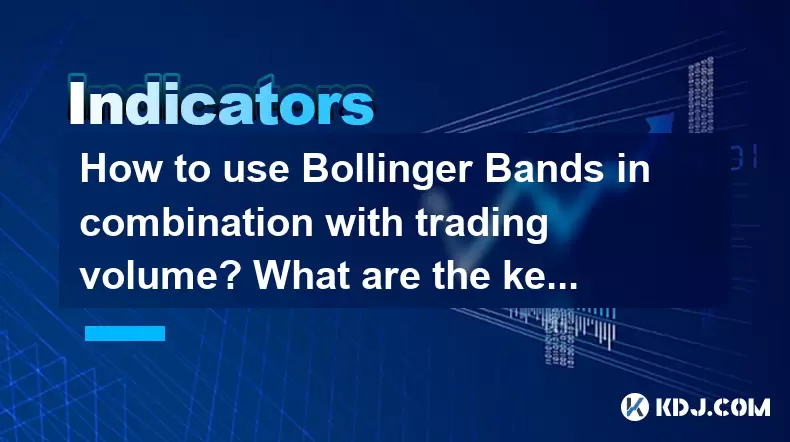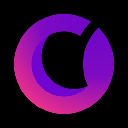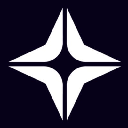-
 bitcoin
bitcoin $109523.663807 USD
-0.13% -
 ethereum
ethereum $4019.526508 USD
2.06% -
 tether
tether $1.000482 USD
0.00% -
 xrp
xrp $2.776815 USD
0.18% -
 bnb
bnb $958.942396 USD
0.12% -
 solana
solana $204.294698 USD
3.84% -
 usd-coin
usd-coin $0.999693 USD
0.00% -
 dogecoin
dogecoin $0.232115 USD
2.09% -
 tron
tron $0.338028 USD
0.84% -
 cardano
cardano $0.790920 USD
1.50% -
 hyperliquid
hyperliquid $44.871443 USD
5.60% -
 ethena-usde
ethena-usde $1.000322 USD
0.04% -
 chainlink
chainlink $21.034165 USD
2.60% -
 avalanche
avalanche $28.794831 USD
-0.54% -
 stellar
stellar $0.360466 USD
1.24%
How to use Bollinger Bands in combination with trading volume? What are the key points of volume-price coordination?
Use Bollinger Bands with trading volume to validate signals: high volume at upper band suggests selling, at lower band suggests buying. Watch for volume trends and divergences.
May 21, 2025 at 08:50 pm

In the realm of cryptocurrency trading, technical analysis tools like Bollinger Bands and trading volume are essential for making informed decisions. This article delves into how to use Bollinger Bands in combination with trading volume and explores the key points of volume-price coordination in the context of cryptocurrency trading.
Understanding Bollinger Bands
Bollinger Bands are a popular technical analysis tool invented by John Bollinger. They consist of a middle band being a simple moving average (SMA) and two outer bands that are standard deviations away from the middle band. Typically, the outer bands are set two standard deviations above and below the SMA.
In the cryptocurrency market, Bollinger Bands help traders identify potential overbought or oversold conditions. When the price of a cryptocurrency touches the upper band, it might indicate that the asset is overbought, suggesting a potential sell signal. Conversely, when the price touches the lower band, it might indicate an oversold condition, suggesting a potential buy signal.
The Role of Trading Volume
Trading volume is a critical metric in cryptocurrency trading, representing the total number of coins or tokens traded within a specific period. High trading volume often indicates strong interest in an asset, while low volume may suggest a lack of interest or liquidity.
Volume can confirm or contradict the signals provided by other technical indicators, including Bollinger Bands. A high volume accompanying a price move can validate the move, suggesting a strong trend. Conversely, low volume may indicate that the price move lacks conviction and might not sustain.
Combining Bollinger Bands with Trading Volume
To effectively use Bollinger Bands in combination with trading volume, traders should focus on the following steps:
Identify Bollinger Band Signals: Start by observing when the price of a cryptocurrency touches the upper or lower Bollinger Band. This can indicate potential overbought or oversold conditions.
Analyze Trading Volume: Next, examine the trading volume at the time the price touches the Bollinger Bands. High volume accompanying the price touching the upper band could validate a potential sell signal, indicating strong selling pressure. Similarly, high volume accompanying the price touching the lower band could validate a potential buy signal, indicating strong buying interest.
Confirm with Volume Trends: Look at the overall volume trend over time. If volume is increasing as the price approaches the Bollinger Bands, it can reinforce the signal. For instance, if the price is approaching the upper band and volume is increasing, it may suggest a stronger sell signal.
Watch for Divergences: Pay attention to any divergences between price and volume. If the price is moving towards the upper or lower band but volume is decreasing, it might indicate that the price move is not supported by market interest and could be a false signal.
Key Points of Volume-Price Coordination
Volume-price coordination refers to the relationship between trading volume and price movements. Understanding this coordination is crucial for making informed trading decisions. Here are the key points to consider:
Volume Leading Price: Often, volume can lead price movements. A surge in volume before a price breakout can indicate that a significant move is imminent. Traders should watch for increased volume as a precursor to potential price changes.
Volume Confirming Price: Volume should confirm price movements. If a cryptocurrency's price is rising and volume is also increasing, it suggests that the upward trend is supported by strong buying interest. Conversely, if the price is falling and volume is increasing, it suggests strong selling pressure.
Volume and Reversals: Volume can signal potential reversals. If the price of a cryptocurrency reaches a new high or low on decreasing volume, it might indicate that the trend is losing momentum and a reversal could be approaching. Traders should be cautious and look for other signs of a potential trend change.
Volume and Breakouts: Volume is crucial for confirming breakouts. A breakout above resistance or below support levels should be accompanied by high volume to validate the move. Low volume breakouts are often less reliable and may result in false signals.
Practical Example of Using Bollinger Bands and Volume
Let's consider a practical example to illustrate how to use Bollinger Bands and trading volume in cryptocurrency trading:
Scenario: Suppose you are analyzing the price chart of Bitcoin (BTC) and notice that the price has touched the upper Bollinger Band.
Step 1: Check the trading volume at the time the price touched the upper band. If the volume is significantly higher than average, it might suggest that the overbought condition is supported by strong selling pressure.
Step 2: Look at the volume trend leading up to the price touching the upper band. If volume has been increasing steadily, it further validates the potential sell signal.
Step 3: Monitor for any divergences. If the price continues to rise but volume starts to decline, it might indicate that the upward move is not sustainable, and a potential reversal could be near.
Step 4: Consider other technical indicators and market conditions to confirm the signal. If other indicators like the Relative Strength Index (RSI) also suggest overbought conditions, it strengthens the case for a potential sell.
Applying Volume-Price Coordination in Trading Strategies
To effectively apply volume-price coordination in your trading strategies, consider the following:
Trend Confirmation: Use volume to confirm the direction of the trend. If you are considering entering a long position, ensure that the price is rising on increasing volume. For short positions, ensure that the price is falling on increasing volume.
Breakout Validation: Validate breakouts by ensuring they occur on high volume. A breakout on low volume is less likely to sustain and could result in a false signal.
Reversal Identification: Identify potential reversals by watching for price movements on decreasing volume. If the price reaches new highs or lows but volume is declining, it might signal that the trend is weakening.
Volume Spikes: Pay attention to significant volume spikes. A sudden increase in volume can indicate a major shift in market sentiment and could precede significant price movements.
FAQs
Q1: Can Bollinger Bands be used effectively without considering trading volume?A1: While Bollinger Bands can provide valuable insights into potential overbought or oversold conditions, using them in isolation without considering trading volume can lead to false signals. Volume helps validate the strength of price movements and can significantly enhance the reliability of Bollinger Band signals.
Q2: How can I determine if a volume spike is significant?A2: To determine if a volume spike is significant, compare the current volume to the average volume over a specific period, such as the past 30 days. A volume spike that is significantly higher than the average volume, often by a factor of two or more, is generally considered significant and may indicate a major shift in market sentiment.
Q3: What other technical indicators can complement Bollinger Bands and trading volume?A3: Other technical indicators that can complement Bollinger Bands and trading volume include the Relative Strength Index (RSI), Moving Average Convergence Divergence (MACD), and the Average Directional Index (ADX). These indicators can provide additional confirmation of trends and potential reversals, enhancing the overall analysis.
Q4: Is volume-price coordination more important in certain market conditions?A4: Volume-price coordination is crucial in all market conditions, but it becomes particularly important during periods of high volatility and significant price movements. In such conditions, volume can provide critical insights into the strength and sustainability of trends, helping traders make more informed decisions.
Disclaimer:info@kdj.com
The information provided is not trading advice. kdj.com does not assume any responsibility for any investments made based on the information provided in this article. Cryptocurrencies are highly volatile and it is highly recommended that you invest with caution after thorough research!
If you believe that the content used on this website infringes your copyright, please contact us immediately (info@kdj.com) and we will delete it promptly.
- Ethereum Price Crash Concerns: Navigating the Volatility
- 2025-09-27 16:45:11
- Bitcoin's Bull Flag and FVG: Decoding the Crypto Crystal Ball
- 2025-09-27 16:25:14
- Ozak AI's $OZ Token: Riding the AI & Blockchain Profit Surge
- 2025-09-27 16:25:14
- Remittix Token Presale: CertiK Verification and PayFi Innovation
- 2025-09-27 16:30:00
- XRP Chart Signal Sparks Price Rally Buzz: Is a Breakout Imminent?
- 2025-09-27 16:45:11
- Vitalik, Chat Control, and Privacy Security: A Balancing Act
- 2025-09-27 16:30:00
Related knowledge

What is a tower bottom candlestick pattern? Does it have a high success rate?
Sep 22,2025 at 07:18am
Tower Bottom Candlestick Pattern Explained1. The tower bottom candlestick pattern is a reversal formation that typically appears at the end of a downt...

What is a black hole pattern in the MACD indicator? Is it a cause for concern?
Sep 21,2025 at 06:54pm
Bitcoin's Role in Decentralized Finance1. Bitcoin remains the cornerstone of decentralized finance, serving as a benchmark for value and security acro...

How can I use the psychological line (PSY) to determine market sentiment?
Sep 17,2025 at 02:19pm
Understanding the Psychological Line (PSY) in Cryptocurrency TradingThe Psychological Line, commonly referred to as PSY, is a momentum oscillator used...

How can I determine if a double top pattern has officially formed?
Sep 21,2025 at 03:18am
Understanding the Structure of a Double Top Pattern1. A double top pattern consists of two distinct peaks that reach approximately the same price leve...

What is the Golden Valley pattern on the moving average? Is it better than the Silver Valley pattern?
Sep 21,2025 at 02:54pm
Understanding the Golden Valley Pattern in Moving Averages1. The Golden Valley pattern is a technical formation observed in cryptocurrency price chart...

What does a death cross of the RSI in the strong zone (above 50) mean?
Sep 17,2025 at 10:54pm
Understanding the Death Cross in RSI Context1. The term 'death cross' is traditionally associated with moving averages, where a short-term average cro...

What is a tower bottom candlestick pattern? Does it have a high success rate?
Sep 22,2025 at 07:18am
Tower Bottom Candlestick Pattern Explained1. The tower bottom candlestick pattern is a reversal formation that typically appears at the end of a downt...

What is a black hole pattern in the MACD indicator? Is it a cause for concern?
Sep 21,2025 at 06:54pm
Bitcoin's Role in Decentralized Finance1. Bitcoin remains the cornerstone of decentralized finance, serving as a benchmark for value and security acro...

How can I use the psychological line (PSY) to determine market sentiment?
Sep 17,2025 at 02:19pm
Understanding the Psychological Line (PSY) in Cryptocurrency TradingThe Psychological Line, commonly referred to as PSY, is a momentum oscillator used...

How can I determine if a double top pattern has officially formed?
Sep 21,2025 at 03:18am
Understanding the Structure of a Double Top Pattern1. A double top pattern consists of two distinct peaks that reach approximately the same price leve...

What is the Golden Valley pattern on the moving average? Is it better than the Silver Valley pattern?
Sep 21,2025 at 02:54pm
Understanding the Golden Valley Pattern in Moving Averages1. The Golden Valley pattern is a technical formation observed in cryptocurrency price chart...

What does a death cross of the RSI in the strong zone (above 50) mean?
Sep 17,2025 at 10:54pm
Understanding the Death Cross in RSI Context1. The term 'death cross' is traditionally associated with moving averages, where a short-term average cro...
See all articles









































































